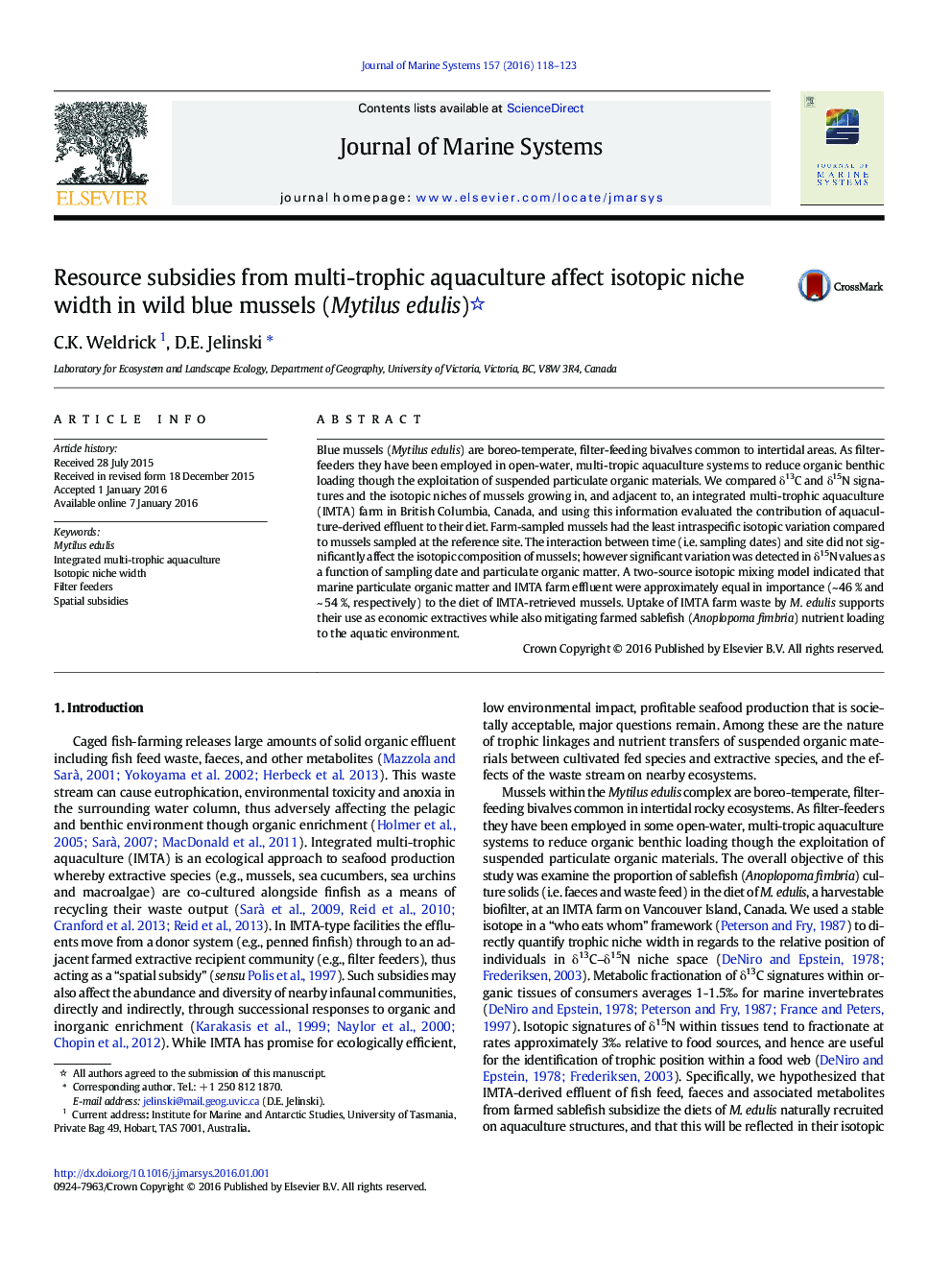| Article ID | Journal | Published Year | Pages | File Type |
|---|---|---|---|---|
| 4547930 | Journal of Marine Systems | 2016 | 6 Pages |
•We used stable isotope analyses to evaluate the importance of fish-derived effluent in an integrated multi-trophic aquaculture (IMTA) facility to the diets of wild blue mussels.•δ13C and δ15N signatures showed variable niche width between IMTA mussels and a nearby reference site.•Uptake of IMTA farm waste by M. edulis supports their use as economic extractives while also mitigating farmed sablefish nutrient loading to the aquatic environment.
Blue mussels (Mytilus edulis) are boreo-temperate, filter-feeding bivalves common to intertidal areas. As filter-feeders they have been employed in open-water, multi-tropic aquaculture systems to reduce organic benthic loading though the exploitation of suspended particulate organic materials. We compared δ13C and δ15N signatures and the isotopic niches of mussels growing in, and adjacent to, an integrated multi-trophic aquaculture (IMTA) farm in British Columbia, Canada, and using this information evaluated the contribution of aquaculture-derived effluent to their diet. Farm-sampled mussels had the least intraspecific isotopic variation compared to mussels sampled at the reference site. The interaction between time (i.e. sampling dates) and site did not significantly affect the isotopic composition of mussels; however significant variation was detected in δ15N values as a function of sampling date and particulate organic matter. A two-source isotopic mixing model indicated that marine particulate organic matter and IMTA farm effluent were approximately equal in importance (~ 46 % and ~ 54 %, respectively) to the diet of IMTA-retrieved mussels. Uptake of IMTA farm waste by M. edulis supports their use as economic extractives while also mitigating farmed sablefish (Anoplopoma fimbria) nutrient loading to the aquatic environment.
